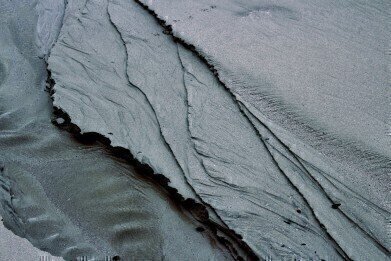Fuel for Thought
An Introduction to Oil Shale
Feb 19 2015
What is Oil Shale?
Oil shale is a term referring to any sedimentary rock that contains materials such as paraffin hydrocarbons. These paraffins are major constituents of natural gas and oil and are called kerogen. When the rock is heated, it releases petroleum-like liquids.
This type of rock was typically laid down millions of years ago, from organic and silt deposits in lake and ocean beds. Over time, these deposits were transformed by pressure and heat to form oil shale. This process follows a similar pattern to the way crude oil is formed. The difference between crude oil and oil shale is that, as conditions were not as extreme with oil shale, oil is locked into the rock.
How is it extracted?
Oil shale can be extracted from the ground, but compared to mining crude oil from wells, the process is much more complicated. With crude oil, pressure from inside the chamber where the gas is present forces the oil up to the surface.
However, with oil shale, the kerogen is in a solid form and cannot be pumped out of the rock. This means that the rock itself has to be mined first before any attempts to extract the oil can begin. Once the rock has been mined, a process called retorting (in which the rock is heated to a high temperature) is carried out. This results in an oil-like liquid that can be further refined and burned for fuel and energy. There are alternative plans to heat the rock whilst it is still underground, but this is only at an experimental stage.
Where it is found?
Shale is increasingly popular in North America. In fact, it’s estimated that North America domestically produced oil at 70% - 86% of the national demand in 2014. For more information on this success story, read this article: Shale Plays Offer Unprecedented Opportunities.
You can find oil shale in several places globally, but much of it lies within the United States. The Green River Formation is situated in Colorado, Utah, and Wyoming, and is considered to hold the world’s largest oil shale deposits.
It is estimated that these vacant federal lands could contain more recoverable oil that the rest of the world put together. Conservative estimates believe there are around 1.2 to 1.8 trillion barrels within the Formation, but not all of this can be mined. However, experts state that if this land could produce just 800 billion barrels, this would last the United States for more than 400 years.
Problems of oil shale mining
For every barrel of oil obtained from shale production, around a ton of rocks are left behind. There’s also the question of the amount of water required to process oil shale, which at present is around several barrels for each oil barrel produced. This is particularly worrying in Western America, where conditions are typically dry and arid.
Oil shale mining also concerns environmentalists, as drilling and excavating the rocks can disturb the surrounding wildlife. It also impacts on air quality, has been linked with global warming, and could have serious damaging effects on local communities.
Digital Edition
PIN 25.2 Apr/May
April 2024
In this Edition Safety - Carbon monoxide toxic and flammable gas detection Analytical Instrumentation - Density: A fundamental parameter at critical stages within the petroleum sector...
View all digital editions
Events
May 06 2024 Riyadh, Saudi Arabia
May 06 2024 Houston, Tx, USA
May 06 2024 Houston, Tx, USA
Canada Gas & LNG Exhibition & Conference
May 07 2024 Vancouver, BC, Canada
May 08 2024 Lahore, Pakistan


















